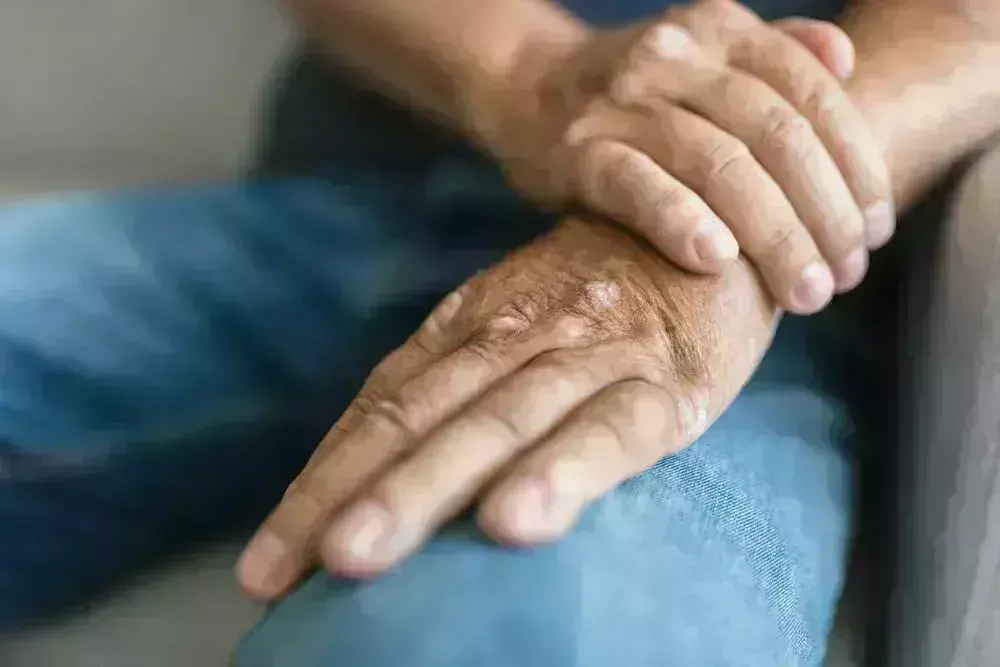- Home
- Medical news & Guidelines
- Anesthesiology
- Cardiology and CTVS
- Critical Care
- Dentistry
- Dermatology
- Diabetes and Endocrinology
- ENT
- Gastroenterology
- Medicine
- Nephrology
- Neurology
- Obstretics-Gynaecology
- Oncology
- Ophthalmology
- Orthopaedics
- Pediatrics-Neonatology
- Psychiatry
- Pulmonology
- Radiology
- Surgery
- Urology
- Laboratory Medicine
- Diet
- Nursing
- Paramedical
- Physiotherapy
- Health news
- Fact Check
- Bone Health Fact Check
- Brain Health Fact Check
- Cancer Related Fact Check
- Child Care Fact Check
- Dental and oral health fact check
- Diabetes and metabolic health fact check
- Diet and Nutrition Fact Check
- Eye and ENT Care Fact Check
- Fitness fact check
- Gut health fact check
- Heart health fact check
- Kidney health fact check
- Medical education fact check
- Men's health fact check
- Respiratory fact check
- Skin and hair care fact check
- Vaccine and Immunization fact check
- Women's health fact check
- AYUSH
- State News
- Andaman and Nicobar Islands
- Andhra Pradesh
- Arunachal Pradesh
- Assam
- Bihar
- Chandigarh
- Chattisgarh
- Dadra and Nagar Haveli
- Daman and Diu
- Delhi
- Goa
- Gujarat
- Haryana
- Himachal Pradesh
- Jammu & Kashmir
- Jharkhand
- Karnataka
- Kerala
- Ladakh
- Lakshadweep
- Madhya Pradesh
- Maharashtra
- Manipur
- Meghalaya
- Mizoram
- Nagaland
- Odisha
- Puducherry
- Punjab
- Rajasthan
- Sikkim
- Tamil Nadu
- Telangana
- Tripura
- Uttar Pradesh
- Uttrakhand
- West Bengal
- Medical Education
- Industry
Rare case of Sporadic hypophosphatemic osteomalacia combined with psoriasis reported

Hypophosphatemic osteomalacia (HO) is an unusual metabolic disease characterized by low concentrations of serum phosphate levels, which leads to reduced mineralization of the bone matrix. Typically, HO consists of 4 common types: X-linked dominant hypophosphatemia (XLH), autosomal dominant hypophosphatemic rickets (ADHR), tumor-induced osteomalacia (TIO), and sporadic HO.
The clinical manifestations include gradually increased bone pain, deformities, fractures, limited mobility, short stature, and muscle weakness. Bone mineral density scan shows moderate-to-severe osteoporosis. Psoriasis is considered as a multisystem chronic inflammatory disorder on the basis of its hereditary background. Psoriatic arthritis (PsA) is an inflammatory condition of joints and is usually associated with the development of plaque psoriasis. According to the classification criteria for psoriatic arthritis (CASPAR), the case presented here fully met the criteria of PsA, but was finally confirmed as HO accompanied by psoriasis.
Yuan Li et al reported the case of a 48-year-old man in “International Journal of Rheumatic Diseases.” The patient developed multiple joint and bone pain and muscle weakness over 5 months with a 23-year history of psoriasis. He was diagnosed with psoriatic arthritis by primary hospitals but was unresponsive to etanercept and adalimumab treatments. After referral to the authors’ hospital, the patient was diagnosed with HOs combined with psoriasis.
On physical examination - A few scaly erythema and plaques were scattered on his head, trunk, and limbs. The Psoriasis Area and Severity Index score was 6.4. No joint swelling, deformation, or tenderness was noted. The power of the lower limbs was grade 4, while the upper limbs were normal.
Blood tests showed high serum alkaline phosphatase (ALP) level of 313 U/L (normal 40–150 U/L). The erythrocyte sedimentation rate, C-reactive protein, liver transaminases, urea, and creatinine were normal. The immune indices, including anti-nuclear antibody, anti-extractable nuclear antigen autoantibody profiles, rheumatoid factor and HLA-B27, were performed, and all were negative. Magnetic resonance imaging (MRI) and computed tomography(CT) of lumbar and lower extremities, which were done in primary hospitals, illustrated bone edema and osteoarthritis with effusion.
The patient was treated with oral phosphate solution, calcium, and active vitamin D, and the symptoms of bone and joint pain and muscle weakness gradually relieved. Since TIO accounts for the majority of adult-onset HO, positron emission tomography – computed tomography or octreotide imaging examinations had been done yearly to locate any underlying tumor in the patient, with negative findings in the 4-year follow-up.
The authors concluded that – “Diagnosis of HO remains a challenge to rheumatologists, and especially to dermatologists when accompanied by psoriasis. After excluding the inherited HO and with negative tumor, this report may be the first male case of sporadic HO combined with psoriasis.”
Further reading:
Sporadic hypophosphatemic osteomalacia combined with psoriasis: A rare case report and a brief review of the literature
Yuan Li, Xiaohong Chen et al
International Journal of Rheumatic Diseases.
DOI: 10.1111/1756-185X.14562
MBBS, Dip. Ortho, DNB ortho, MNAMS
Dr Supreeth D R (MBBS, Dip. Ortho, DNB ortho, MNAMS) is a practicing orthopedician with interest in medical research and publishing articles. He completed MBBS from mysore medical college, dip ortho from Trivandrum medical college and sec. DNB from Manipal Hospital, Bengaluru. He has expirence of 7years in the field of orthopedics. He has presented scientific papers & posters in various state, national and international conferences. His interest in writing articles lead the way to join medical dialogues. He can be contacted at editorial@medicaldialogues.in.
Dr Kamal Kant Kohli-MBBS, DTCD- a chest specialist with more than 30 years of practice and a flair for writing clinical articles, Dr Kamal Kant Kohli joined Medical Dialogues as a Chief Editor of Medical News. Besides writing articles, as an editor, he proofreads and verifies all the medical content published on Medical Dialogues including those coming from journals, studies,medical conferences,guidelines etc. Email: drkohli@medicaldialogues.in. Contact no. 011-43720751


